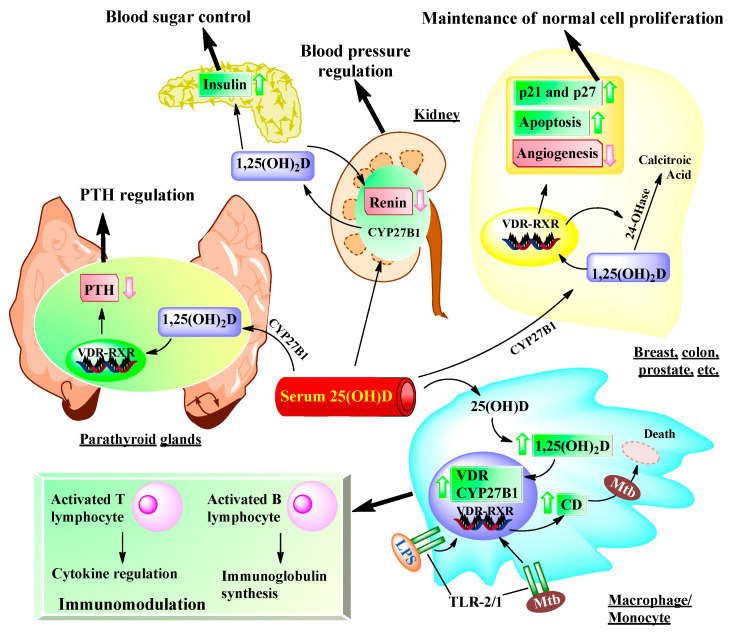Figure 3.
Metabolism of 25(OH)D to 1α,25(OH)2D for non-musculoskeletal functions. 1α,25(OH)2D not only regulates calcium and phosphorus homeostasis but can inhibit renin production in the kidney and stimulate the pancreas to secret insulin. 1α,25(OH)2D can also be converted from 25(OH)D through autocrine production and interacts with VDR in the breast, colon, prostate, and other tissues to regulate a wide variety of genes that control proliferation (such as enhancing expression of p21 and p27), inhibit angiogenesis, and induce differentiation and apoptosis. It is believed that the regulation of cell growth and maturation is important for decreasing risk of the cell becoming malignant. The upregulation of VDR and CYP27B1 expression occurs after the activation of toll-like receptor 2/1 (TLR2/1) in a macrophage or monocyte by an infectious agent such as Mycobacterium tuberculosis (Mtb) or its lipopolysaccharide. This results in an increase in the nuclear expression of cathelicidin, a cationic peptide capable of promoting innate immunity and the destruction of the infectious agents. The regulation of cytokine synthesis and immunoglobulin synthesis by activated T lymphocytes and activated B lymphocytes, respectively, is associated with the 1α,25(OH)2D, which is locally produced in monocytes and macrophages.

